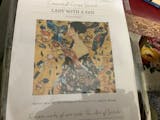Pablo Picasso (3)
Pablo Picasso, the OG of Cubism and an all-around artistic powerhouse, was a Spanish artist whose name is practically synonymous with modern art. Born in 1881 in Málaga, Picasso showed signs of genius from an early age.
Picasso’s career can’t be summed up easily because he seemed to live multiple artistic lives. In his Blue Period, he painted somber, monochromatic works inspired by sadness and struggle. (Think The Old Guitarist—sad but gorgeous.) Then came his Rose Period, when he discovered pink tones, circus performers, and a slightly cheerier vibe.
But the big bang of his career? Cubism. Alongside Georges Braque, Picasso broke objects and figures into geometric shapes, creating works that made people squint and say, "Wait, is that a face?" His masterpiece Les Demoiselles d’Avignon was so revolutionary it practically caused an art world meltdown. Cubism changed everything—perspective, form, and how we think about art itself.
Picasso didn’t stop at Cubism. He experimented with Surrealism, Neoclassicism, and just about every "ism" you can think of. His works range from the playful (The Three Musicians) to the politically powerful (Guernica), a haunting anti-war statement that hits as hard today as it did in 1937.
Of course, Picasso’s personal life was as colorful as his palette—filled with muses, drama, and a knack for reinvention. Love him or loathe him, there’s no denying he reshaped the art world. Picasso didn’t just create art; he created movements, stirred controversies, and left a legacy so vast it’s practically its own galaxy.












